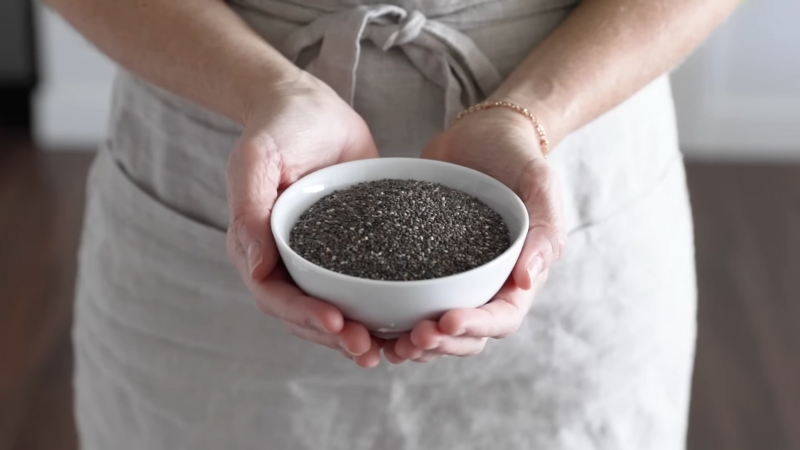
Share Post:
Myo-Reps are an advanced training method that involves pushing a set to the edge of failure to maximize muscle fiber activation.
This technique keeps the fibers engaged over a longer duration by using brief rest intervals and performing multiple short sets.
This results in enhanced muscle hypertrophy efficiency.
Table of Contents
ToggleHow to Perform
After this set, rack the weight and take 4-5 deep breaths, ensuring this rest period does not exceed 15 seconds.
Next, begin the first Myo-Rep set, performing 6-8 reps to failure.
For those incorporating ab workouts for women, this method can also be applied to exercises such as crunches or leg raises to maximize muscle engagement.
Rack the weight once more and repeat the short rest period of 4-5 breaths. Continue with another set, this time performing 4-6 reps to failure. Keep alternating between these short rest periods and sets until maintaining proper form for even a single rep becomes impossible.
Capped Myo-Rep Sets
Examples include:
- 5+5+5+5 = 20 Total Myo-Reps
- 6+4+4+4+2 = 20 Total Myo-Reps
- 8+5+4+3 = 20 Total Myo-Reps
Auto-Regulated
@liftrunbang Before you ASK me anything READ the WHOLE CAPTION. – FIRST – post activation or “back off sets” are NOT “warming up the CNS” and have ZERO to do with the CNS. So keep reading. – Are back sets viable as a hypertrophy approach? – Yes. The main application is not less load or more reps, it’s simply a way to increase the number of stimulating reps done in a session. That’s it. There’s nothing magical about reducing the load, increasing the reps compared to the heavier set. It’s simply a way to add more stimulating reps to the session. – The only caveat to this is that if someone went too heavy and had a compensating pattern that didn’t adequately load the target tissues as well, then a reduction in load could improve mechanics and then provide a better stimulus for that tissue. – Post activation potentiation – “iT gEtS yoUR NerVOuS sYSteM mORe FiRed Up!” – This would mean that we somehow are better able to recruit motor units after the reduction in load, but it has been observed in actual muscle FIBERS alone (isolated) which means IT IS NOT a nervous system component that is caused by an increase in voluntary force (which is more motor unit recruitment). PMID: 31736781 – PMID: 28595235 – “These results provide evidence that drop jumps induce PAP, markedly enhancing the force-generating capacity of the muscle.” – It’s NOT a central nervous system improvement. It is literally something that happens at the peripheral level and has potentiation for a limited time within the session (phase potentiation is different than PAP). – PAP actually causes an increased sensitivity to calcium ions which increases the amount of force production at the fiber level. – “So do drop sets, RIGHT?” – It’s simply stating that once the fibers are active (this can even be done with plyos) that they will have a time span afterward, where they can produce more force. So this is still happening in your “heavy” sets.
Auto-Regulated Myo-Reps involve performing Myo-Reps over 6-8 week training blocks, which allows for better management of fatigue and recovery. This technique adjusts the training volume based on how well-rested and energized an athlete is on a given day.
For instance, if using the rule of 4 Myo-Reps following each rest:
- Perform an activation set of 8-10 reps.
- Rest for no more than 15 seconds (about 5 breaths).
- Perform 4 Myo-Reps.
- Rest again for up to 15 seconds.
- Continue this process until reaching only 3 Myo-Reps in a set, then stop.
This method ensures that training volume dynamically adjusts according to daily recovery and energy levels.
Workout Programming
@seebergpia ⭐️MYO-REPS – hva, hvordan og hvorfor⭐️ Ny episode av @treningspodden denne uka, der vi blant annet snakker mer om denne fantastiske treningsmetoden 😍💪🏻 Den er funnet opp av @borgefagerli, norsk treningjekspert og «know it all» innen trening og helse😎 Hovedmålet er å optimalisere treningseffektiviteten, og tilby muskel- og styrkeøkninger som kan sammenlignes med tradisjonelle sett, men på mye kortere tid. Vi skal ikke forkaste et tradisjonelt repetisjonsformat og Børge selv mener at 5-8 (eller til og med 4-6) reps gir best valuta for pengene, også kalt «sweet spot» for å bygge muskler. MEN👇🏻 mye tilsier at det er noe unikt med å utføre høyere repetisjoner og mer metabolsk krevende arbeid også. SÅ, isteden for å juice ut 20 reps x 3-4 sett i en øvelse, med all pausetiden det innebærer, kan vi gjøre vi myo-reps, som fungerer slik jeg beskriver i videoen🫶🏻💪🏻 Husk å sjekke ut ukas episode av @treningspodden om du vil bli smartest, sprekest og kulest i gymtimen! #tiktoknorge #myoreps #treningsnorge #norskgymtok #treningstips
Myo-Reps enhance the efficiency of typical sets and can be incorporated into any exercise routine. This method requires no changes in equipment or weight, making it ideal for those who train independently.
The extra volume provided by Myo-Reps is particularly beneficial during 4 to 8-week hypertrophy cycles, especially for underdeveloped muscle groups needing additional work for growth.
Advantages
- Continuous activation of powerful muscle fibers
- Enhanced hypertrophic growth
- More significant muscle gains in less time
- Reduced need for prolonged rest periods
- Improved efficiency and shorter workout sessions
Example Comparison
Conventional Sets
| Set | Reps | Effective Activation Reps (Largest Muscle Fibers) | Rest Period |
|---|---|---|---|
| Set 1 | 1-10 | 8-10 | 2-3 minutes |
| Set 2 | 1-10 | 8-10 | 2-3 minutes |
| Set 3 | 1-9 | 7-9 | 2-3 minutes |
| Total | 29 reps | 9 reps (effective) | 7 minutes |
Myo-Rep Sets
| Set | Reps | Effective Activation Reps (Largest Muscle Fibers) |
|---|---|---|
| Activation Set | 1-10 | 8-10 |
| Myo-Rep 1 | 1-4 | 1-4 |
| Myo-Rep 2 | 1-3 | 1-3 |
| Myo-Rep 3 | 1-3 | 1-3 |
| Myo-Rep 4 | 1-3 | 1-3 |
| Total | 23 reps | 16 reps (effective) |
Example Workout (Hamstrings)
Stiff Leg Deadlift
- Warm-Up Sets: Start with a lightweight, performing 10-12 repetitions.
- Working Set: Lift a heavy weight, aiming for failure at 6-8 reps.
After racking the weight, take 4-5 breaths, then perform 2-4 more reps.
Seated Hamstring Curl
- Warm-Up Sets: Use a lightweight and do 12-15 repetitions.
- Working Set: Use a heavy weight and aim to reach failure at 12 reps.
Rack the weight and rest for 4-5 breaths, then perform another 4-6 reps.
Dumbbell Stiff Leg Deadlift
- Warm-Up Sets: Warm up with a light weight for 12-15 repetitions.
- Working Set: Use a heavyweight, reaching failure at 15 reps.
Rack the weight and pause for 4-5 breaths, then execute another 6-8 reps.
Repeat this procedure of racking and resting until a total of 20 Myo-Reps are completed.
Related Posts:
- How to Lift Properly? Techniques to Avoid Back…
- Best Times of Day to Work Out for Strength, Fat…
- How to Balance Fitness, School, and Work Without…
- How I Keep My Clients on Track Even When They Are Traveling
- Fitness Meal Prep Mistakes Most People Don't Know…
- 4 Best Ways to Treat Shin Splints Before They Turn…













